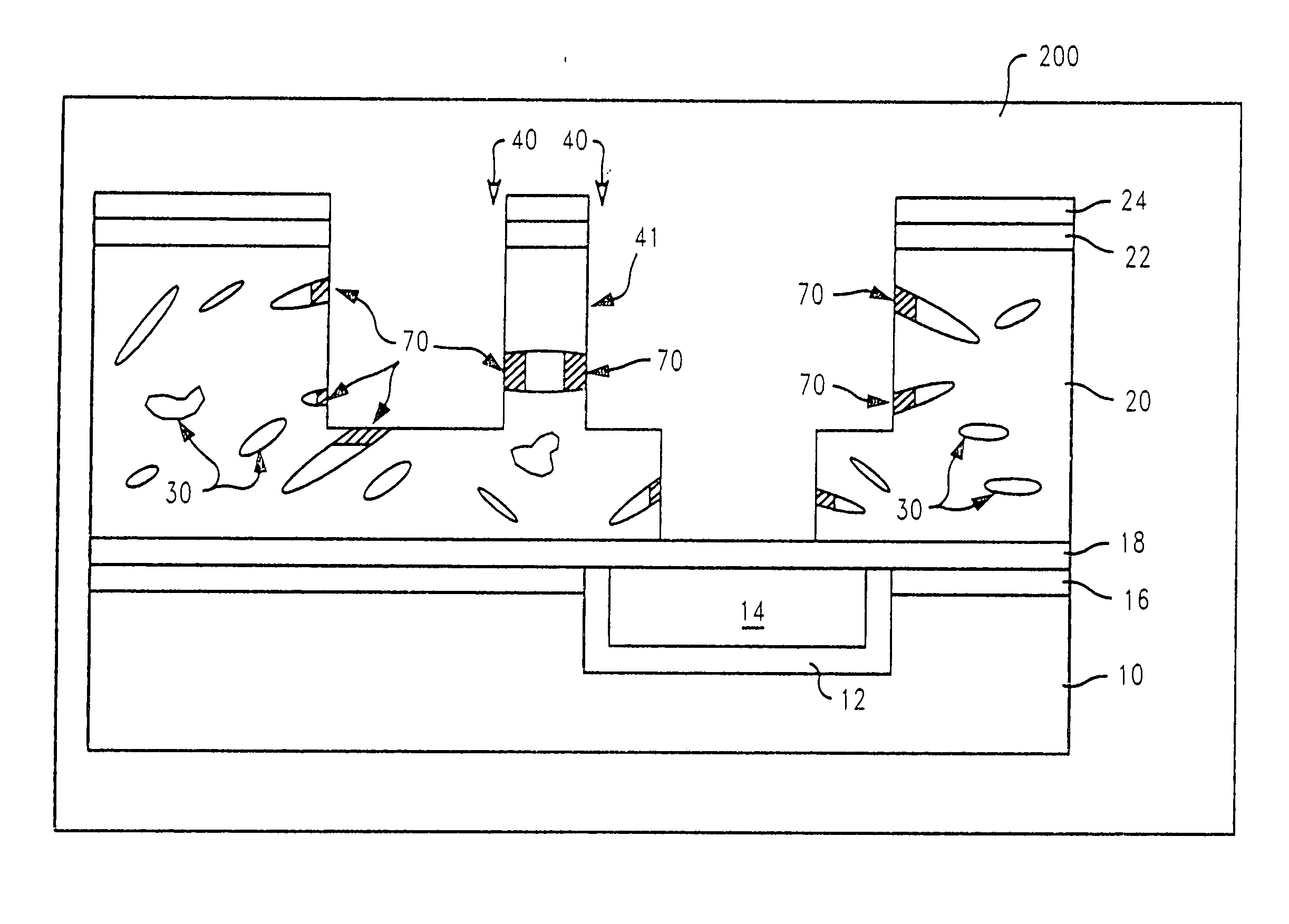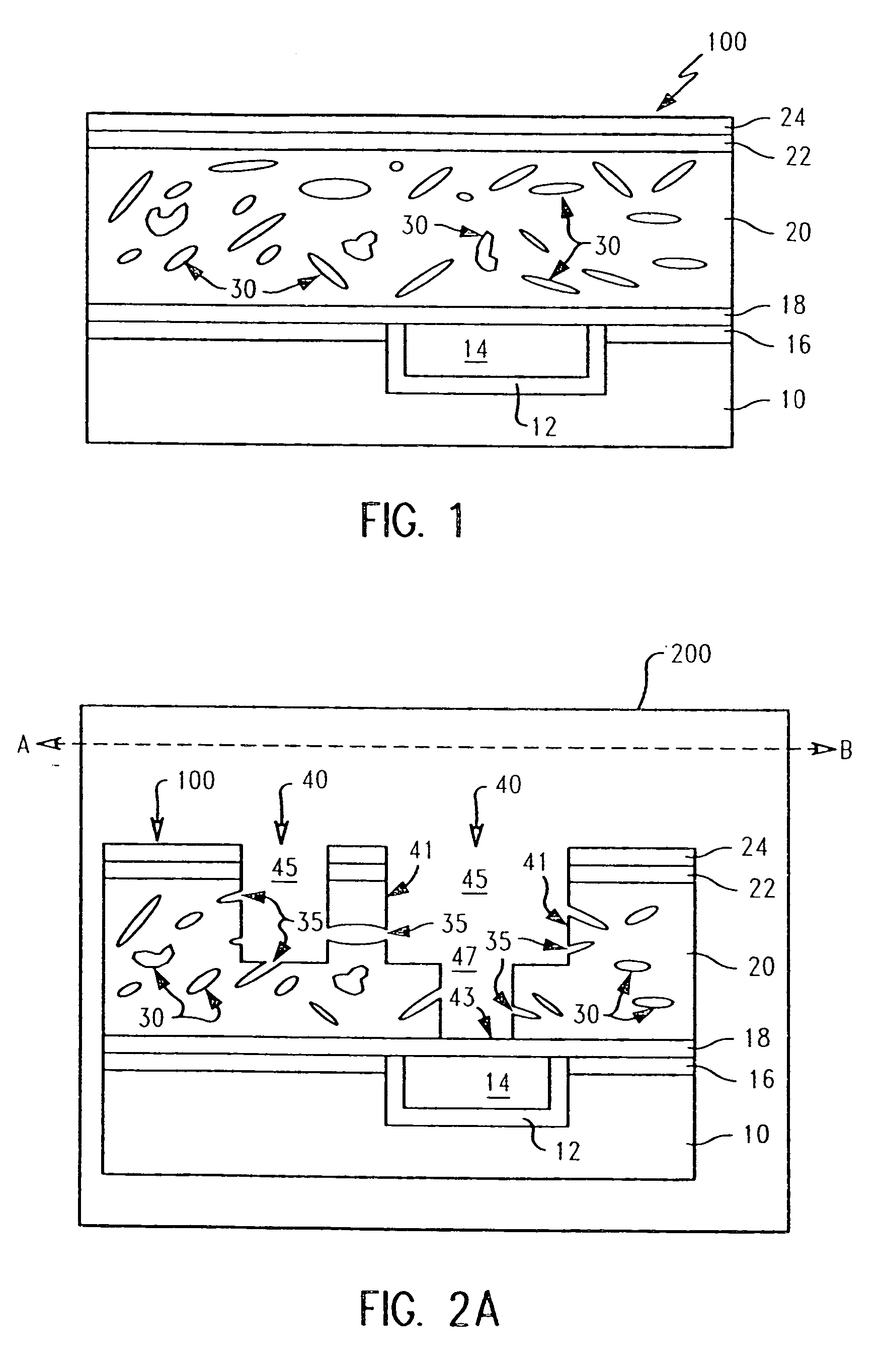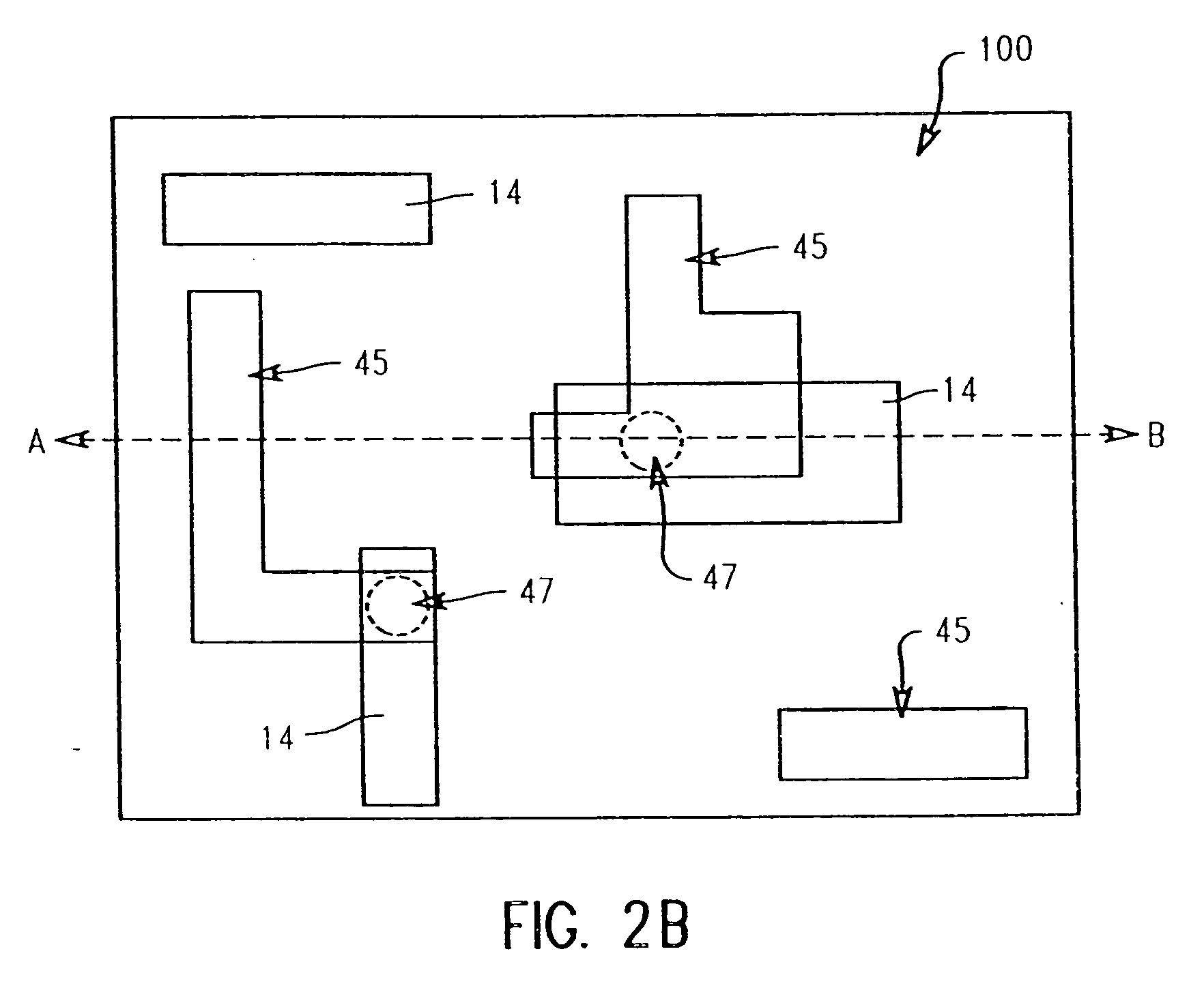Exposed pore sealing post patterning
a technology of exposed pores and pores, which is applied in the direction of semiconductor devices, semiconductor/solid-state device details, electrical apparatus, etc., can solve the problems of loss of ic and increased cross-talk speed, horizontal spacing, and the need to reduce interconnect capacitance even further, so as to increase the hydrophilic nature of the porous dielectric layer and increase the hydrophilic nature of the exposed pores
- Summary
- Abstract
- Description
- Claims
- Application Information
AI Technical Summary
Benefits of technology
Problems solved by technology
Method used
Image
Examples
example 1
[0061] Dual damascene or single damascene trenches and vias, as discussed above, are formed as known in the art. The present invention provides for closing these exposed pores 35 by first introducing a first reactant, such as, an oxygen-containing surfactant 50 into the chamber, as shown in FIG. 3. For example, water molecules may first be introduced into the chamber. The porous low k dielectric layer may be exposed to the water molecules under processing conditions Including pressures ranging from about 1 mTorr to about 7,600 Torr, temperatures ranging from about −50° C. to about 450° C., for a time sufficient to at least allow filling the exposed pores 35 with absorbed water molecules, such as a time ranging from about 10 seconds to about 1 hour.
[0062] By exposing the porous low k dielectric layer to these oxygen-containing surfactant molecules, e.g., water molecules, under the above processing parameters, the oxygen-containing molecules are provided into openings 40 within the p...
example 2
[0072] As an alternative to the above Examples, and without deviating from the novel concept of the invention, a carbon-containing surfactant may be deposited into openings 40 for a time sufficient to allow carbon-containing surfactant molecules absorb within the exposed pores 35 and be retained therein. This carbon-containing surfactant may include, but is not limited to, carbon (C2) Dupanol SP. The carbon-containing surfactant may be introduced into the processing chamber for absorption within the exposed pores 35 under aqueous or supercritical CO2 processing conditions.
[0073] Upon completion of the carbon-containing surfactant deposition process, residual deposited carbon-containing surfactant is removed from the substrate 100, and in particular, from surfaces of the porous low k dielectric layer, including any interior surfaces of openings 40 within porous layer 20. Deposited carbon-containing molecules are removed from interior wall surfaces 41 and bottom surfaces 43 of openin...
example 3
[0077] Also illustrated by FIGS. 3-6, another alternate to the above examples, and again without deviating from the novel concept of the invention, the porous low k dielectric layer may comprise a porous organic material, such as porous SiLK™, whereby ammonia (NH3), TEOS liquid (or vapor), and the like, is readily absorbed by such organic material. Like the examples of the invention described above, NH3 50 may be exposed into openings 40 for a time sufficient to allow NH3 molecules to absorb within the exposed pores 35 and be retained therein. In so doing, if a plasma is used, the NH3 plasma is processed under conditions including pressures of about 1 mTorr to about 100 Torr, temperatures of about −50° C. to about 450° C., and a time ranging from about 10 seconds to about 1 hour.
[0078] Any excess undesired NH3 is then removed from surfaces of the porous layer 20, and in particular, from interior walls and bottoms of openings 40 within porous layer 20, such as by annealing or exposu...
PUM
| Property | Measurement | Unit |
|---|---|---|
| thickness | aaaaa | aaaaa |
| dielectric constant | aaaaa | aaaaa |
| dielectric constant | aaaaa | aaaaa |
Abstract
Description
Claims
Application Information
 Login to View More
Login to View More - R&D
- Intellectual Property
- Life Sciences
- Materials
- Tech Scout
- Unparalleled Data Quality
- Higher Quality Content
- 60% Fewer Hallucinations
Browse by: Latest US Patents, China's latest patents, Technical Efficacy Thesaurus, Application Domain, Technology Topic, Popular Technical Reports.
© 2025 PatSnap. All rights reserved.Legal|Privacy policy|Modern Slavery Act Transparency Statement|Sitemap|About US| Contact US: help@patsnap.com



